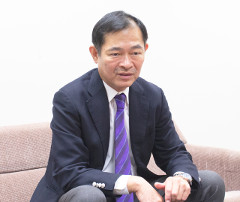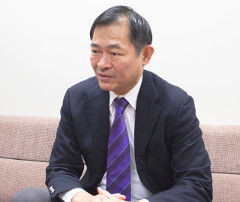The idiosyncrasy of samurai made Meiji Ishin an unparalleled historical event

Most post-war historians judge that Meiji Ishin was nothing more than an imperfect correction of the feudal system of Edo Period. Therefore, they argue, many of the very old customs and institutions no longer existing in Western advanced countries have been carried over to modern-day Japan.
The term “Meiji Ishin” is usually translated into English as “Meiji Restoration,” but not as “Meiji Revolution.” The general interpretation is that it was just a restoration of the imperial rule.
Further, much fewer lives were lost than in the revolutions in England, France or Russia. This might be another reason why it is not viewed as a major social transformation.
It is still true, however, that the Meiji Ishin was the starting point of Japan’s modernization. Perhaps it is possible to say that the factors that prevent terming the Meiji Ishin a revolution are indeed the characteristics that make Meiji Ishin a revolution which has no parallels in world history.
To take one example, some two million people are said to have died in the French Revolution, including the civil war and the Napoleonic War that ensued. During the Meiji Ishin, the war dead amounted to only 12,000 and 15,000 in the Boshin War and the Seinan War, respectively.
Of course, the people of Aizu suffered a great deal in the battle of Aizu, a great tragedy that should never be forgotten.
Overall, however, why was the Meiji Ishin possible to transform Japan with minimal risk? It was because the samurai, the privileged elite and the ruling class of society, came out to dismantle their own class. This is a major characteristic of the Meiji Ishin.
The most symbolic of this voluntary self-denial was the Taisei Hokan (transfer of political power back to the imperial court) by the last Tokugawa Shogun Yoshinobu. Granted, Japan’s regal authority had been characterized traditionally by its dichotomy between the emperor and the shogun. Still, it is hard to imagine that, say, a King Louis would willingly put an end to his dynasty.
When the battle of Toba-Fushimi broke out, Yoshinobu decided to retreat and stay away from all official duties. Had Yoshinobu chosen to fight against the Satsuma-Choshu allied forces until the end, the battle could well have developed into a civil war, resulting in, for one, as many war victims as in the French Revolution and, for another, intervention by the Western powers possibly with cession of the Japanese homeland.
In fact, some commanders of Yoshinobu’s army had a war plan to intercept the allied forces at Hakone and that plan is said to have had a good chance of victory. However, Yoshinobu did not allow it to happen.
How was it possible that the elite class samurai would disband itself and play the key role in the social transformation? One reason is that the samurai, who by origin were militants, had acquired the Confucian ethics as a means to justify their political leader position in the course of the over 250 years of peace of the Edo Period.
For example, Confucian teaching warns political leaders against pursuing their own personal interests. The samurai class over the long years of the Edo Period had acquired such a high level of morality and education.
At the same time, the samurai class was a military group and as such they must have had the realistic viewpoint and the cool mind to decide how not to lose a battle.
This mentality was demonstrated when they were faced with the difficult reality of how to react to the pressure from the Western powers. In my view, the principle of avoiding a war by all means had been passed on firmly all the way down from the very first Tokugawa shogun.
Consequently, the entrenched rights were dismantled with low risk and the Meiji Ishin turned out to be a revolution hardly paralleled in world history.
The samurai elites had to destroy the ancient regime by themselves
Though after the return of power back to the imperial court, Yoshinobu appears to have had the intention of remaining at the central position in the new administrative body to be born.
His strategy was to abandon the obsolete government system of Tokugawa administration which was incapable of taking effective responses to the series of tumultuous events starting with the arrival of Commodore Perry. Instead, he planned to build up a new body which would be capable of addressing the challenges of the new era. The body, according to Yoshinobu’s plan, would be a coalition of influential local domain leaders who had not been allowed to participate in national government under the Tokugawa regime. Yoshinobu’s idea was to play out his political savvy in such a coalition.
However, Saigo and Okubo were well aware of the political shrewdness of Yoshinobu and did not think that such a coalition government with Yoshinobu at the center would be a genuinely new government.
It is well known that the class system of Edo Period consisted of four classes: samurai, farmers, artisans and merchants in descending order. It is much less known that the samurai class in itself had a strict ranking by family. However capable one samurai may be, the highest position he could possibly reach in government office was determined by his family background.
A samurai born in a low-ranking family would never be able to become a karo, a top-ranking official in a domain. Nothing was more important in the Edo Period than stability and peace. The rule had worked well to prevent troubles and instability.
But now, conservative policies like this were simply inadequate to resist the storms that began to hit the country. A new system open to all capable talents to participate and display their abilities regardless of their hereditary family ranks was very much needed. In fact, Saigo and Okubo were both from low-ranking families in the Satsuma Domain.
Japan at that time consisted of as many as 250 domains each with its own daimyo (local lord) who was served by a group of many and diversely talented officials in the running of the domain. Such talented men were not limited to just Saigo, Okubo, Kido and Ito who later became famous national heroes.
For instance, there was Nakajima Saburosuke, an official of the shogunate government. His family, generation after generation, served as yoriki (roughly comparable to police captain) for the district of Shimoda. When Commodore Perry came over, Saburosuke was a yoriki at Uraga Bugyosho which, among others, oversaw the port of Uraga. As such, Saburosuke was the first contact for Commodore Perry.
He sternly resisted Perry’s demands and pressure, and he thoroughly examined the structure of the steam-engine ship and the cannons, frustrating Commodore Perry. He wrote a detailed report and submitted it to the roju (the senior-most official in Edo) of the time Abe Masahiro.
Had it been in peacetime, Nakajima would have ended his career as petty officer, but inside he was a man of sufficient courage and ability to face head-on the top commander of the American fleet. When the Boshin War broke out, Saburosuke travelled, fighting as far north as to Hakodate and died a fierce and courageous death there.
Nakajima took pride in being an official of the shogunate until his last moment. Many people of such noble spirit and outstanding talent were found throughout Japan at the time. In order to bring their capabilities into full play with no regard to the hereditary family rank, it was necessary to tear down the old social class system in which they as a whole occupied the top ruling layer. In this way, the elite had to dismantle the organizations and institutions on which their own positions were founded.
This is another reason why the samurai became the main actor of the dismantling and the transformation. In this sense, it may be right to believe that Saigo and Okubo were deeply concerned about the possibility of Yoshinobu, the last shogun, continuing to sit at the center, and the two carefully planned his removal from office because they wanted to use his departure as a symbol for the advent of a classless society.
Meiji Ishin: an aggregation of the hard work of many and diverse people

While drastic changes took place in the samurai class, the changes in the life of common people were much milder. This is because artisan and commercial techniques had been developed to high levels in the long course of the Edo Period.
For example, artisan mastery had reached levels high enough to enable the smooth transition to modern-day industries. In business, techniques and systems for money exchange, forward trading, etc. had been developed already to serve as the infrastructure for Western-style capitalism.
The practices and systems of the Edo Period were not merely passed on to the Meiji Period; rather, they were inherited because they were useful for the running of a modern society. The Meiji Ishin was not an across-the-board social transformation. Major transformation took place in some aspects, while old practices and systems were passed on in other aspects. This is another major characteristic of the Meiji Ishin.
In this regard, it is important to remember that Osei Fukko (return of the political power back to imperial court), though declared as such, was in substance hardly a reproduction or inheritance of the ancient Ritsuryo political system. The Meiji Ishin abolished outright the top positions of Sessho and Kampaku among the nobles and the top position of Seii Taishogun among the samurai. Instead, Osei Fukko created below the Emperor the positions of Sosai (prime minister), Gijo (ministers) and Sanyo (secretaries).
This new political system opened the path towards the creation of a parliament consisting of the representatives of the people (in 1890). Needless to say, the creation of a parliament was facilitated also by the rise of the Freedom and People’s Rights Movement that surged out from among the people, triggered by the abolishment of the class system, the four-caste-system. In short, Osei Fukko was not a mere restoration.
All told, I think it is right to say that the Meiji Ishin was a revolution on which unique characteristics of Japanese society are reflected strongly.
By saying this, I do not mean to beautify the Meiji Ishin in its entirety. One can argue that the Meiji Ishin was the starting point of Japan’s invasion into Asia.
The other side of the coin though is that Japan proved that modernization is possible in a non-Christian society, leaving a significant impact on the future progress of its neighboring countries.
It is true that the Meiji Ishin was not accompanied by the kind of very noble philosophy that the French Revolution had for realization on this Earth. In stark contrast, the main players of the Meiji Ishin did not share any clear vision in common to start with. They responded haphazardly as a chain of critical situations came and went.
We should never forget that many people of different backgrounds thought really hard about the best way to respond to the crisis and tide over the difficulties. Some put their lives at stake, while others made similarly painstaking efforts. Because all this hard work and sacrifice were brought together, the driving forces of an unprecedented transformation were generated. The fact that an aggregation of these forces culminated in the Meiji Ishin should be appreciated positively, in my opinion.
Today we live an affluent life here in Japan, which is widely recognized as an industrialized country. We have a lot to learn from our ancestors of diverse backgrounds who only 150 years ago left a significant mark in our history during their short lives.
* The information contained herein is current as of December 2018.
* The contents of articles on Meiji.net are based on the personal ideas and opinions of the author and do not indicate the official opinion of Meiji University.
Information noted in the articles and videos, such as positions and affiliations, are current at the time of production.

